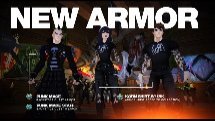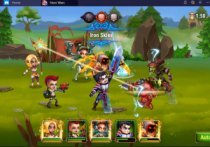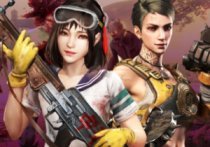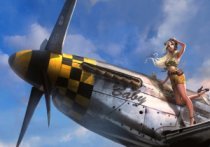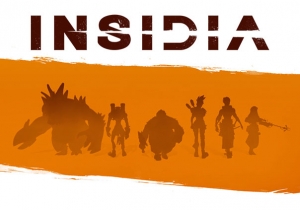Insidia – First Look
Insidia is a game that tries to do a lot of things to stand out. Combining elements of MOBAs, turn based strategy games, and old-school board games like chess, there’s a lot to like here… potentially. The game does a lot of things, but unfortunately it does few of them well.
Insidia is an interesting animal. It’s a turn-based strategy MOBA RTS, and if that sounds like a lot, well it is. The concept at the core of the game is intriguing enough. Players select a team of four heroes of the currently available six. They then compete for control of several objectives on the map. Each character has stats, a passive ability, an active ability, and an ultimate. The most interesting thing is that, like in Chess, you can only deploy or move one unit per turn. That’s it. The hero that moves is also the only one that can take an action this turn. This turns a game that felt like a one on one version of Atlas Reactor into something much slower.
As your characters interact with enemies and the board, they gain power that goes toward activating an ultimate. Any character can use your accrued power, as it’s a shared pool. Mastering these abilities is critical to capturing the available map objectives which include: two energy wells that grant additional ultimate power generation, and a giant cross platform that activates a super cannon after three turns of occupation, blasting away at the enemy base. All of this culminates in taking down your enemies’ core.
Insidia’s roster splits into the usual four character archetypes; tank, assassin, bruiser, and support. Each character also has a specific number of spaces they can move in a turn and still act. This is important to consider when building your team. Additionally, your active unit can forgo their action for extra squares of movement which can be a difference maker.
My favorite of these characters is Angor, the Eternal Hunger. In addition to his cool model, he’s an eternal force that you don’t control so much as influence and it is reflects in gameplay. You can move him, but after he moves, he squats down to charge 3 squares on his next turn. The upside is that he damages any hero he hits and stops there. The downside is that this makes it near impossible for him to hold objectives. Even still, he’s easily the most memorable character among the current roster.
Combat in the game also feels a bit awkward at first. Most characters have no auto attack, so all the damage you deal is reliant on using active abilities. While this isn’t inherently a problem, it does take a bit of adjustment. It only becomes an issue when you factor in the flaws in the game’s presentation.
The game hits its first stumbling blocks here. The only tooltips available for viewing are when you mouse over the active unit’s portrait on the bottom of the screen. When you’re not moving a unit, you cannot check any of its stats or abilities. If you mouse over a unit who isn’t active, it tells you the name of their abilities and that’s it. No numbers, no targeting conditions, nothing.
This is just one facet of the game’s convoluted and half-functioning interface. Turns in the game are simultaneous, and have a planning phase and a resolution phase. These phases are indicated by this single moving bar near the bottom of the screen. The turn timer counts down ridiculously fast so if you’re a new player and don’t know your characters’ moves yet, you’re out of luck. Additionally, the counter takes pregnant pauses between every single little action, slowing the already measured pace of the game down considerably.
These flaws wouldn’t shine through so brightly if the game had done more with the time it spends on the tutorial to explain these things. Yes, I know the game is in beta, and the very first screen says there may be incomplete or non-functioning features but the stuff that’s missing feels absolutely necessary for the game to function fluidly.
These flaws aside, Insidia does have its upsides. Visually, the game is quite pretty. The cel-shaded style and bright colors make the otherwise boring segments of the game much more interesting. The music isn’t bad either. It’s nothing I’d be in a rush to load onto my phone, but it provides a nice level of atmosphere during matches without intruding too much. The core gameplay concepts at work here are fun to think about as well. The single character interactions every turn, combined with delays on some characters’ abilities mean you can plan ahead and set up combos that feel great when executed properly.
All in all, Insidia is a great idea that falls flat in execution. I want to like the game, but there are so many hurdles to jump in its presentation that any fun I could have had playing it was lost in the shuffle. These are fixable problems, and the game has more than enough life ahead of it to work out the kinks. When it does, it could be good. Until then, don’t waste your time.
Videos You May Enjoy
Articles You May Enjoy
- Steam Introduces New Refund Policy
- Valve has announced a new refunds policy for its game distribution service, Steam.
- Block N Load - Alpha Impressions
- Zelus heads over to a Jagex event in San Francisco where Block N Load is revealed. He returns with his hands-on first impressions.





